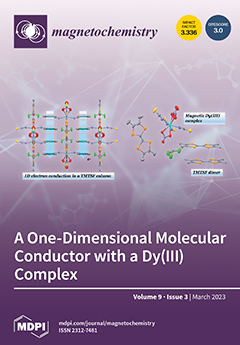A MoN
x coating serves as an effective wear protection layer and is crucial for the investigation of its tribological characteristics at various temperatures. This study examined the tribological characteristics of MoN
x coatings that were deposited through high-power pulsed magnetron sputtering (HiPIMS) in an Ar/N
2 environment with varying N
2 partial pressures. The microstructures and mechanical properties of the coatings were elucidated using scanning electron microscopy, grazing-incidence-angle X-ray diffraction, energy-dispersive spectroscopy, and nanoindentation. The dry friction performances of the coatings at different heating temperatures were studied using a ball-on-disk tribometer. The MoN
x coating produced by HiPIMS was composed primarily of fcc−Mo
2N and featured a fine, dense column crystal with a maximum hardness of 28.8 GPa. The MoN
x coatings exhibited excellent lubrication and wear reduction properties at room temperature (RT). The dry friction performances of the MoN
x coatings at elevated temperatures were expected to depend on the growth of the MoO
3 tribolayer. At relatively low temperatures (300 °C and 400 °C), the MoO
3 tribolayer grew slowly and was not enough to provide good lubrication, causing increases in the dry friction of the coatings. However, the δ−MoN phase formed in the MoN
x coating deposited at a high N
2 partial pressure could facilitate the formation of MoO
3 and thus decreased the friction coefficient at 400 °C. At the relatively high heating temperature of 500 °C, however, the MoO
3 tribolayer grew so rapidly that the oxide layer became thick, resulting in an increase in the wear rate. It is believed that tuning the growth rate of MoO
3 via optimizing the composition and structure of the MoN
x coatings might be a useful way to improve the dry friction at various elevated temperatures.
Full article





